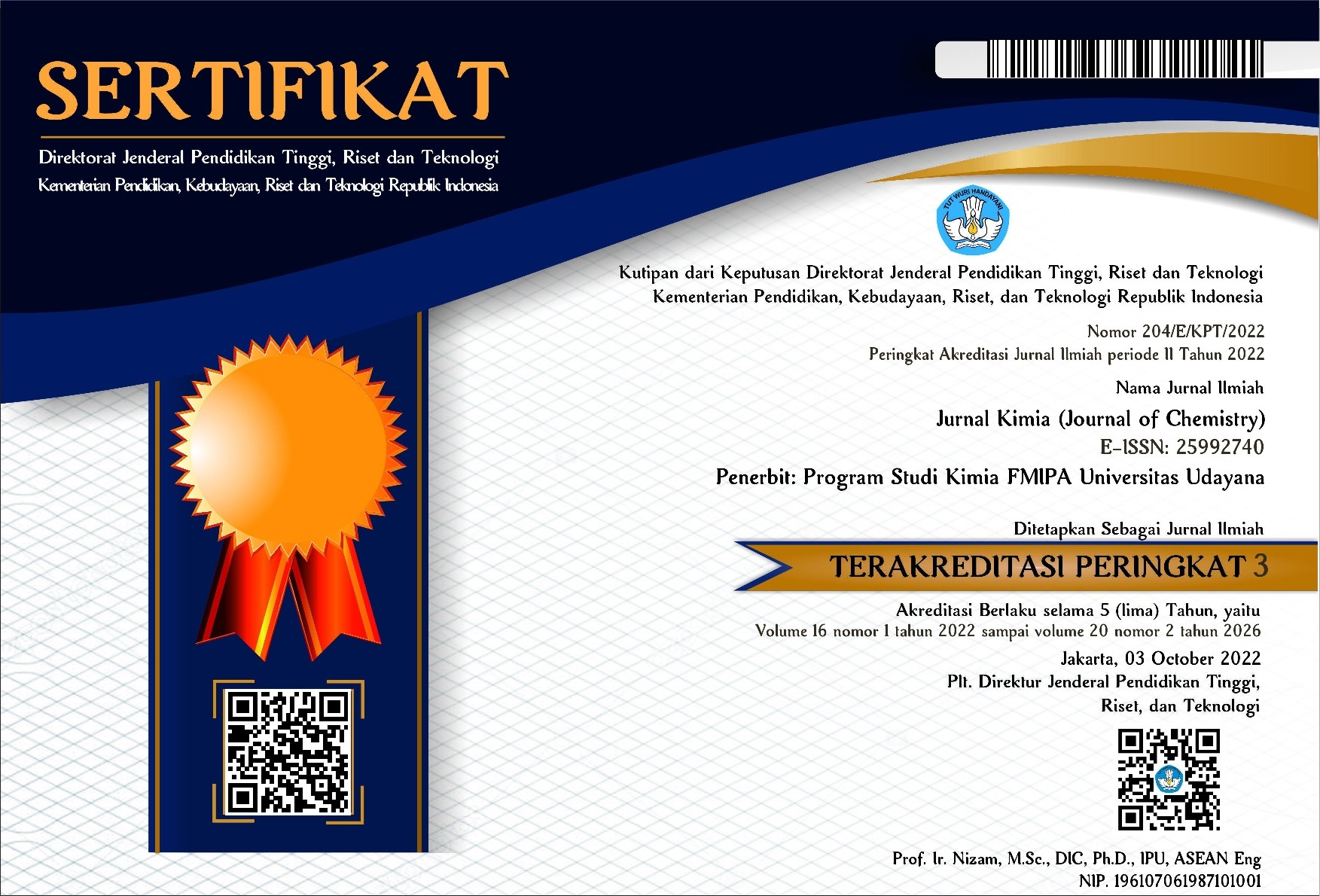ADSORPSI ION Pb2+ OLEH LEMPUNG TERINTERKALASI SURFAKTAN
Abstract
Intercalation of Bentonit clay with quaternary ammonium salt, N-cetyl, N,N,N –trimethyl ammoniumbromide in the presence of palmitic acid was investigated in this research. The aim was to improve the capacity of
Bentonit clay as adsorbent for lead ion (Pb2+). The salt used has a capacity of 8 mmol/10kg clay, which equal to its
capacity as cation exchanged. After intercalating process, palmitic acid was added and then clay was ready to be
used as adsorbent for lead ion (Pb2+).
Characterisation of physical chemistry properties of the intercalated Bentonit clay was performed using Xray
diffractometer for basal spacing distance between interlayer Bentonit clay, infra red spectrometer for Brownstead
acid site, and atomic adsorption spectroscopy to determine the capacity of adsorption by analyzing isotherm
adsorption and equilibrium temperature data.
It was found that the intercalation of Bentonit clay with quaternary ammonium salt, N-cetyl, N,N,N –
trimethyl ammonium bromide increased the distance between interlayer Bentonit clay (basal spacing from 15.9236
Ao to 21.0554 Ao. The infra red spectra data revealed the appearance of Brownstead acid site at n 1419.5 cm-1. The
result also found that the capacity of Bentonit clay as adsorbent for lead ion (Pb2+) improved from 1.9565 mg/g
before intercalation to 4.0263 mg/g (after intercalation process).
Downloads
Download data is not yet available.
How to Cite
WIDIHATI, I. A. Gede.
ADSORPSI ION Pb2+ OLEH LEMPUNG TERINTERKALASI SURFAKTAN.
Jurnal Kimia (Journal of Chemistry), [S.l.], nov. 2012.
ISSN 2599-2740.
Available at: <http://ojs.unud.ac.id/index.php/jchem/article/view/2730>. Date accessed: 11 aug. 2025.
Section
Articles
Keywords
intercalation, clay, ammonium quaternary salt, adsorption

This work is licensed under a Creative Commons Attribution 4.0 International License





